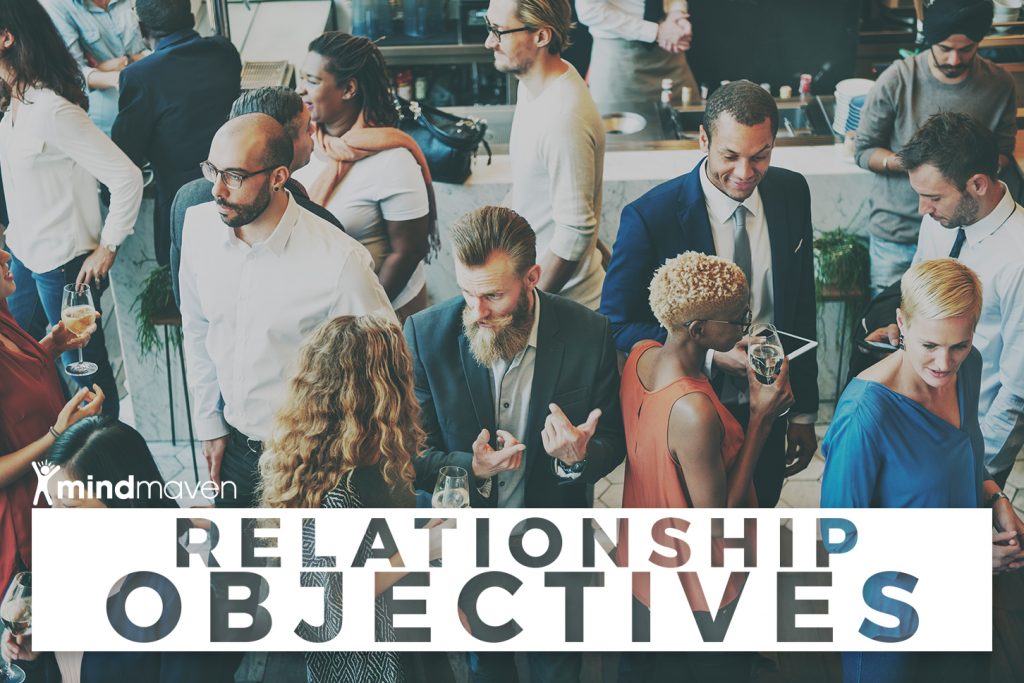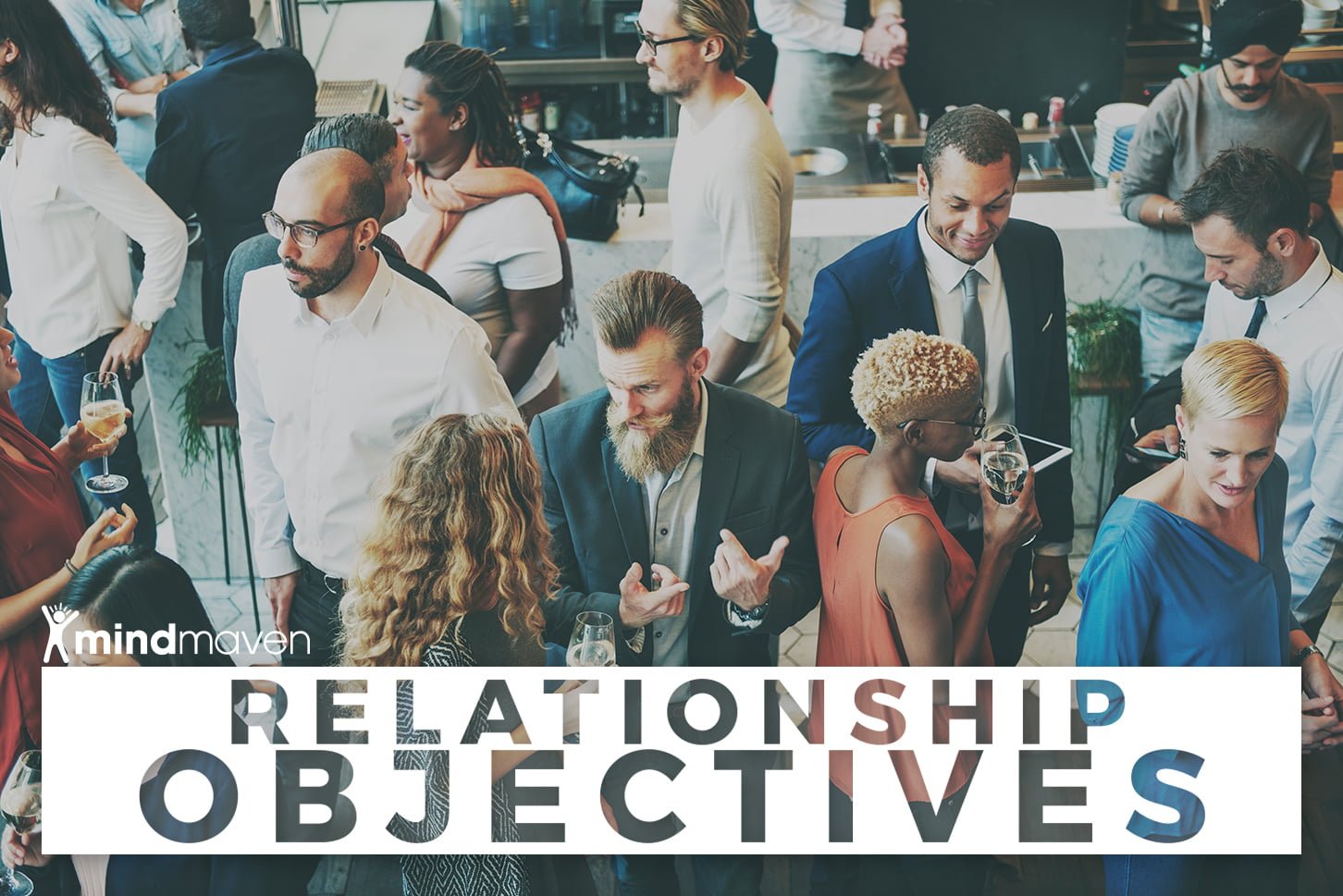What do you want out of your relationships?
Everyone has what I like to call a relationship objective; the problem is, most of us aren’t consciously aware of what ours is.
- For some, it’s incredibly direct and specific: “I want to leverage my network to make more money.”
- For others, it’s a little less direct: “I want to hire great talent to achieve my business goals.”
- And for others still, it’s more personal: “I just want to meet and befriend great people.”
In the end, your goals are your own. It doesn’t matter what they are as long as you know what they are.
In this article, we’re going to talk about how to create a clear, motivating, and empowering relationship objective. But first, you need to understand why they’re so important in the first place.
The Importance of Relationship Objectives
Ever heard the saying, “If you don’t know what you want, you’re not going to get it?” The same is true for your network. If your contacts don’t know what you want, they can’t help you get it.
Here’s how opportunity generation within a network works: Everyone you’ve met retains some sort of memory about you. People will be triggered to think of you anytime they come across something that relates to this memory.
You’ve probably noticed this phenomenon before: Let’s say you took a passionate and obvious interest in soccer. Suddenly, people around you started sending you soccer-related information and opportunities.
You were invited to games, sent interesting articles, and kept up-to-speed on relevant soccer news because your network knew that was what you were interested in. In other words, you conditioned them to think of you whenever they encountered anything related to soccer.
It’s that simple, and that powerful. Imagine what you could do if you took full control over how you conditioned your network.
Managing Your Mindshare
Remember that memory imprint I mentioned above? The one you leave on all your contacts? I call that memory “Mindshare,” and it directly affects someone’s ability to think of you in the face of opportunity.
To truly understand how Mindshare works, you need to understand it’s two dimensions: Quantitative and qualitative. Let’s take a quick look at each.
- The quantitative dimension covers how strong your mindshare is with a particular contact. Put another way, it measures how top-of-mind you are.
- The qualitative dimension covers what your network thinks of when they think about you. For instance, in the example above the qualitative dimension would have been soccer.
For the purpose of this article, we’re going to focus on the qualitative dimension. To fully understand how this works, let’s do a little exercise.
Read each of the statements below and notice who comes to mind:
- An emerging startup is looking to hire a full-time marketer,
- The Jets just made it to the Playoffs, or
- You just read a highly-valuable blog post on productivity.
Most of you thought of someone in particular for at least one of the situations above. Why? Because of the mindshare they have in your mental space. They’ve conditioned you to think of them in situations related to marketing, baseball, or productivity.
Note: If you didn’t think of anyone, that’s okay. It just means the situations weren’t relevant to your network.
That’s the power of mindshare. But most people waste this power: They aren’t conscious of or purposeful with the mindshare they create.
Once you start intentionally creating mindshare within your network, you can start leveraging that to create highly-relevant and highly-valuable opportunities.
Creating Your Relationship Management Objective
So here’s the question: When do you want people to think of you?
- When they hear about marketing opportunities?
- When they meet VCs looking to invest?
- When they find promising-but-undiscovered startups?
I’m sure some of you are already saying, “Well, I want my network to think of me in many different situations.”
That’s understandable, but the more objectives you add, the less likely they are to be successful. Remember, you want to make this easy on your contacts, and expecting them to memorize a long list of triggers isn’t realistic. The less ambiguity, the easier it is for people to connect you to relevant opportunities.
If you really have trouble narrowing down your focus, here’s a potential solution: Categorize your contacts into different triggers.
For example, imagine you’re a startup lawyer with two passions: Helping high-potential startups succeed and spending time with your kids.
If both are equally important to you, you might consider separating your contacts into two categories:
- Your professional contacts, who you condition to think of you when they come across promising startups, and
- Your personal contacts, who you condition to think of you when they discover great family activities.
Take some time now to define what exactly you want out of your network.
Conditioning Your Network
Once you’ve got your relationship objective, it’s time to get the word out. Do this in whatever way feels natural for you. For example:
- Social media: Post high-quality content related to your objective on a regular basis. Or take a more direct approach and post something like, “I’m looking for … Can any of you help out?”
- Offline: For in-person or over-the-phone situations, you just have to be direct and share what you’re interested in. More importantly, find out and deliver on what they’re interested in; they’ll be likely to return the favor.
For example, let’s say you’re a startup lawyer again, still looking for promising new businesses to represent. Here’s what you might say to start conditioning a new business contact:
“I really enjoy helping startups get off the ground the right way and love meeting bright, energetic entrepreneurs set on changing the world.”
With such a clear a visual representation of your objective, this person is now very likely to think of you when they come across the type of person you described. This is especially true if they encounter someone like this shortly after the meeting, while your mindshare is still high.
Review: 3 Steps to Generate High-Value Opportunities with a Relationship Objective
We covered a lot of content in a short article. Let’s review the main points:
- Define your objective. Keep in mind you probably already have one, you just need to identify it. Actually write it down, and try to be as clear and vivid as possible.
- Condition your network. Use every interaction to increase your mindshare and further your conditioning. But make sure this is done in a natural, genuine way; and make sure you’re providing just as much (or more) value than you expect to receive.
- Audit your objective. As your needs evolve and your network grows, your relationship objective may change. Be sure to regularly review how you’re leveraging your network to ensure you’re still focused on what matters most.



